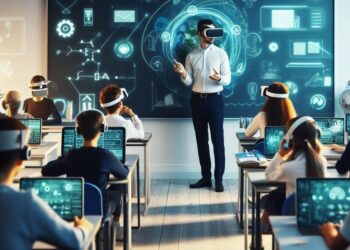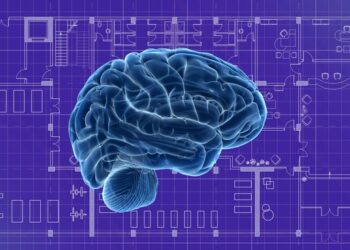The educational landscape is experiencing an unprecedented transformation as artificial intelligence technologies reshape how students learn and teachers instruct across the globe. From elementary schools in rural communities to prestigious universities in major metropolitan areas, AI-powered solutions are revolutionizing traditional teaching methods and creating more engaging, personalized, and effective learning experiences.
This technological revolution extends far beyond simple digitization of textbooks or online courses. Modern AI systems are fundamentally changing the core mechanics of education by providing intelligent tutoring, automated assessment, personalized curriculum adaptation, and real-time learning analytics that were previously impossible to achieve at scale.
The Current State of AI in Education
Global Adoption Trends
Educational institutions worldwide are embracing AI technologies at an accelerating pace. Recent studies indicate that the global AI in education market is projected to reach unprecedented levels, with schools, colleges, and universities investing billions of dollars in intelligent educational systems.
The adoption patterns vary significantly across different regions and educational levels. Developed nations like the United States, United Kingdom, Canada, and Nordic countries are leading the charge with comprehensive AI integration programs. Meanwhile, developing nations are leveraging AI to address fundamental educational challenges such as teacher shortages, limited resources, and geographic barriers to quality education.
Key AI Technologies in Modern Classrooms
Today’s educational AI encompasses several sophisticated technologies working in harmony to enhance learning outcomes:
Machine Learning Algorithms: These systems analyze vast amounts of student data to identify learning patterns, predict academic performance, and recommend personalized study paths. Advanced algorithms can detect when students are struggling with specific concepts and automatically adjust the difficulty level or teaching approach.
Natural Language Processing: AI systems equipped with NLP capabilities can understand and respond to student questions in natural language, provide detailed explanations of complex topics, and even engage in meaningful conversations about academic subjects.
Computer Vision Technology: Visual AI systems can analyze student behavior, attention levels, and engagement during lessons, providing teachers with valuable insights into classroom dynamics and individual student needs.
Predictive Analytics: These systems forecast student performance, identify at-risk learners early, and suggest interventions to prevent academic failure before it occurs.
Transformative Applications of AI in Education
A. Personalized Learning Pathways
One of the most significant advantages of AI in education is its ability to create truly personalized learning experiences. Traditional classroom settings often follow a one-size-fits-all approach, where all students receive identical instruction regardless of their individual learning styles, pace, or prior knowledge.
AI-powered adaptive learning platforms change this paradigm entirely. These systems continuously assess each student’s understanding, learning preferences, and progress speed to create customized educational journeys. For instance, if a student excels in mathematics but struggles with reading comprehension, the AI system will allocate more time and resources to language arts while maintaining appropriate mathematical challenges.
The personalization extends to content delivery methods as well. Some students learn better through visual presentations, while others prefer auditory explanations or hands-on activities. AI systems can identify these preferences and adjust their teaching methods accordingly, presenting the same information through different modalities to maximize comprehension and retention.
B. Intelligent Tutoring Systems
AI-powered tutoring systems represent a quantum leap from traditional computer-assisted instruction. These sophisticated platforms can simulate human tutoring behavior, providing step-by-step guidance, asking probing questions, and offering encouragement when students face difficulties.
Modern intelligent tutoring systems employ sophisticated dialogue management to maintain meaningful conversations with students. They can recognize when a student is confused, frustrated, or disengaged, and respond with appropriate support strategies. These systems also maintain detailed records of each interaction, building comprehensive profiles of student learning patterns and preferences.
The availability of AI tutors addresses a critical global challenge: the shortage of qualified human tutors and teachers. In many regions, students lack access to individual tutoring due to geographic constraints or economic limitations. AI tutoring systems democratize access to personalized instruction, providing high-quality educational support to students regardless of their location or economic circumstances.
C. Automated Assessment and Feedback
Traditional assessment methods often involve significant delays between test completion and result delivery, limiting their effectiveness as learning tools. AI-powered assessment systems provide immediate, detailed feedback that enhances the learning process.
These systems go beyond simple right-or-wrong evaluations. They analyze student responses to identify specific misconceptions, knowledge gaps, and areas requiring additional attention. The feedback includes detailed explanations, suggested resources for improvement, and personalized recommendations for future study.
AI assessment tools also support various question types that were previously difficult to evaluate automatically. Natural language processing enables the assessment of open-ended questions, essays, and creative writing assignments, providing detailed feedback on content quality, argument structure, and writing style.
D. Predictive Analytics for Student Success
AI systems excel at identifying patterns in large datasets that human analysts might miss. In educational contexts, these capabilities translate to powerful predictive analytics that can forecast student outcomes and identify intervention opportunities.
Early warning systems powered by AI analyze multiple factors including attendance patterns, assignment completion rates, test scores, participation levels, and even behavioral indicators to predict which students are at risk of academic failure or dropout. These predictions enable educators to provide targeted support before problems become insurmountable.
The predictive capabilities extend to curriculum planning as well. AI systems can analyze historical data to predict which topics students will find most challenging, allowing teachers to allocate appropriate time and resources to these areas.
Benefits of AI Integration in Classrooms
Enhanced Learning Efficiency
AI technologies significantly improve learning efficiency through several mechanisms. Adaptive learning platforms ensure that students spend time on concepts they haven’t mastered while quickly progressing through material they understand well. This optimization prevents both boredom from repetitive content and frustration from overly challenging material.
Intelligent spacing algorithms determine optimal review schedules for learned material, implementing evidence-based spaced repetition techniques that maximize long-term retention. These systems track when students are likely to forget specific information and schedule review sessions accordingly.
Improved Teacher Effectiveness
Rather than replacing teachers, AI systems augment human capabilities and free educators to focus on high-value activities. Automated grading systems handle routine assessment tasks, allowing teachers to spend more time on lesson planning, individual student consultation, and creative instructional design.
AI-powered analytics provide teachers with detailed insights into student progress, learning patterns, and areas requiring additional attention. These insights enable more informed instructional decisions and help teachers identify students who need extra support before they fall behind.
Professional development opportunities are also enhanced through AI systems that analyze teaching effectiveness and suggest improvement strategies based on student outcomes and engagement metrics.
Accessibility and Inclusion
AI technologies are breaking down barriers to education for students with disabilities and special needs. Speech recognition systems enable students with physical disabilities to interact with educational content through voice commands. Visual AI systems can describe images and diagrams for visually impaired students, while text-to-speech technologies support students with reading difficulties.
Language barriers are also being addressed through real-time translation systems that enable students to access educational content in their native languages while simultaneously learning new languages.
Scalable Quality Education
AI systems enable high-quality educational experiences to reach previously underserved populations. Remote and rural areas with limited access to qualified teachers can benefit from AI-powered educational platforms that provide consistent, high-quality instruction.
The scalability of AI systems means that successful educational approaches can be replicated and deployed globally, sharing best practices and effective teaching methods across different cultures and educational systems.
Challenges and Considerations
A. Privacy and Data Security Concerns
The implementation of AI in education involves collecting and analyzing vast amounts of sensitive student data, including academic performance, behavioral patterns, and personal information. Protecting this data from breaches, misuse, and unauthorized access is paramount.
Educational institutions must implement robust security measures, including encryption, access controls, and regular security audits. Clear data governance policies must define how student information is collected, used, stored, and shared.
Transparency is crucial in building trust among students, parents, and educators. Institutions must clearly communicate what data is being collected, how it’s being used, and what measures are in place to protect privacy.
B. Digital Divide and Equity Issues
The benefits of AI in education are not equally accessible to all students. Socioeconomic disparities can create significant barriers to AI adoption, as these technologies often require substantial infrastructure investments, including high-speed internet connectivity, modern computing devices, and technical support.
Rural and underserved communities may lack the necessary technological infrastructure to implement AI-powered educational systems effectively. This digital divide risks exacerbating existing educational inequalities rather than addressing them.
Strategies to address these challenges include public-private partnerships, government initiatives to improve digital infrastructure, and the development of low-cost, accessible AI educational tools designed for resource-constrained environments.
C. Teacher Training and Adaptation
Successful AI integration requires comprehensive teacher training programs that help educators understand and effectively utilize new technologies. Many teachers, particularly those who have been in the profession for many years, may feel overwhelmed by rapid technological changes.
Professional development programs must address both technical skills and pedagogical approaches for AI-enhanced teaching. Teachers need to understand how to interpret AI-generated insights, integrate AI tools into their lesson plans, and maintain the human elements that are essential to effective education.
Ongoing support and mentorship are crucial for helping teachers adapt to AI-enhanced educational environments. Peer collaboration and communities of practice can provide valuable forums for sharing experiences and best practices.
D. Maintaining Human Connection
While AI systems excel at data analysis and personalized content delivery, they cannot replace the emotional support, motivation, and human connection that teachers provide. Educational institutions must carefully balance AI automation with human interaction to ensure students receive comprehensive educational experiences.
The risk of over-relying on AI systems could lead to reduced face-to-face interaction, potentially impacting students’ social and emotional development. Maintaining meaningful teacher-student relationships remains crucial for educational success and personal growth.
Future Prospects and Innovations
Emerging Technologies
The future of AI in education will likely include several emerging technologies that are currently in development or early adoption phases:
Virtual and Augmented Reality Integration: AI systems combined with VR and AR technologies will create immersive educational experiences that transport students to historical events, inside molecular structures, or to distant planets. These experiences will make abstract concepts tangible and enhance understanding through interactive exploration.
Advanced Natural Language Processing: Future AI tutors will engage in increasingly sophisticated conversations with students, understanding context, emotion, and nuanced communication patterns. These systems will provide more human-like interactions while maintaining the scalability advantages of AI.
Biometric Monitoring: Advanced sensors could monitor student physiological responses, attention levels, and emotional states to provide real-time feedback on engagement and understanding. This data could help optimize learning environments and teaching approaches.
Global Expansion Trends
AI in education is expected to expand rapidly in developing nations as infrastructure improvements and cost reductions make these technologies more accessible. International organizations and governments are investing in AI education initiatives to address global challenges such as literacy, numeracy, and skills development.
Cross-cultural adaptation of AI educational systems will become increasingly important as these technologies spread to diverse educational contexts with different cultural values, teaching traditions, and learning preferences.
Integration with Traditional Education
The future will likely see deeper integration between AI systems and traditional educational approaches rather than replacement of conventional methods. Hybrid models that combine the best of human instruction with AI capabilities will become the norm.
Educational institutions will develop more sophisticated strategies for leveraging AI while preserving the essential human elements of education. This integration will require ongoing research into effective pedagogical approaches for AI-enhanced learning environments.
Implementation Strategies for Educational Institutions
A. Assessment and Planning Phase
Educational institutions considering AI implementation should begin with comprehensive assessments of their current technological infrastructure, teaching capabilities, and student needs. This evaluation should identify specific challenges that AI systems could address and establish clear objectives for implementation.
Stakeholder engagement is crucial during the planning phase. Teachers, students, parents, and administrators should all have opportunities to provide input on AI integration plans and express concerns or expectations.
Budget planning must account for not only initial technology investments but also ongoing costs such as software licensing, hardware maintenance, teacher training, and technical support.
B. Pilot Programs and Gradual Implementation
Rather than institution-wide deployment, successful AI integration often begins with small-scale pilot programs that test specific technologies in limited contexts. These pilots provide valuable insights into effectiveness, challenges, and user acceptance before broader implementation.
Pilot programs should include robust evaluation mechanisms that measure both quantitative outcomes (such as test scores and engagement metrics) and qualitative feedback from teachers and students.
Gradual scaling allows institutions to learn from early experiences, refine their approaches, and build organizational capacity for managing AI-enhanced educational systems.
C. Teacher Training and Support Systems
Comprehensive professional development programs are essential for successful AI integration. These programs should address both technical skills and pedagogical strategies for AI-enhanced teaching.
Training should be ongoing rather than one-time events, as AI technologies continue to evolve rapidly. Regular workshops, webinars, and peer collaboration sessions help teachers stay current with new developments and share effective practices.
Technical support systems must be readily available to address issues quickly and minimize disruptions to the learning process. This support should include both human assistance and self-service resources such as tutorials and troubleshooting guides.
D. Evaluation and Continuous Improvement
Regular evaluation of AI implementation effectiveness is crucial for identifying successes, challenges, and areas for improvement. Evaluation should encompass multiple metrics including student learning outcomes, teacher satisfaction, engagement levels, and cost-effectiveness.
Feedback collection systems should capture input from all stakeholders and provide mechanisms for addressing concerns and suggestions. This feedback should inform ongoing refinements to AI system configurations and implementation strategies.
Continuous improvement processes ensure that AI educational systems evolve to meet changing needs and incorporate new technological developments as they become available.
Conclusion
The integration of artificial intelligence in education represents one of the most significant transformations in learning since the invention of the printing press. As AI technologies continue to advance and become more accessible, their impact on global education systems will only intensify.
The benefits of AI in education are substantial and wide-ranging, from personalized learning experiences that adapt to individual student needs to predictive analytics that identify and address learning challenges before they become insurmountable obstacles. These technologies promise to make high-quality education more accessible, effective, and engaging for students worldwide.
However, the successful implementation of AI in education requires careful consideration of challenges including privacy concerns, digital equity issues, and the need for comprehensive teacher training. Educational institutions must approach AI integration thoughtfully, with clear strategies for maintaining the human elements that are essential to effective education while leveraging the unique capabilities that AI systems provide.
As we look toward the future, the most successful educational environments will likely be those that achieve optimal integration between artificial intelligence and human instruction. These hybrid models will combine the scalability, personalization, and analytical power of AI with the empathy, creativity, and wisdom that human educators bring to the learning process.
The transformation of education through AI is not just a technological revolution—it’s an opportunity to create more equitable, effective, and engaging learning experiences for students around the world. By embracing these technologies while addressing their challenges responsibly, we can build educational systems that better serve the diverse needs of learners in the 21st century and beyond.
The journey toward AI-enhanced education is just beginning, and the institutions that embrace this transformation thoughtfully and strategically will be best positioned to prepare their students for success in an increasingly digital and interconnected world.












